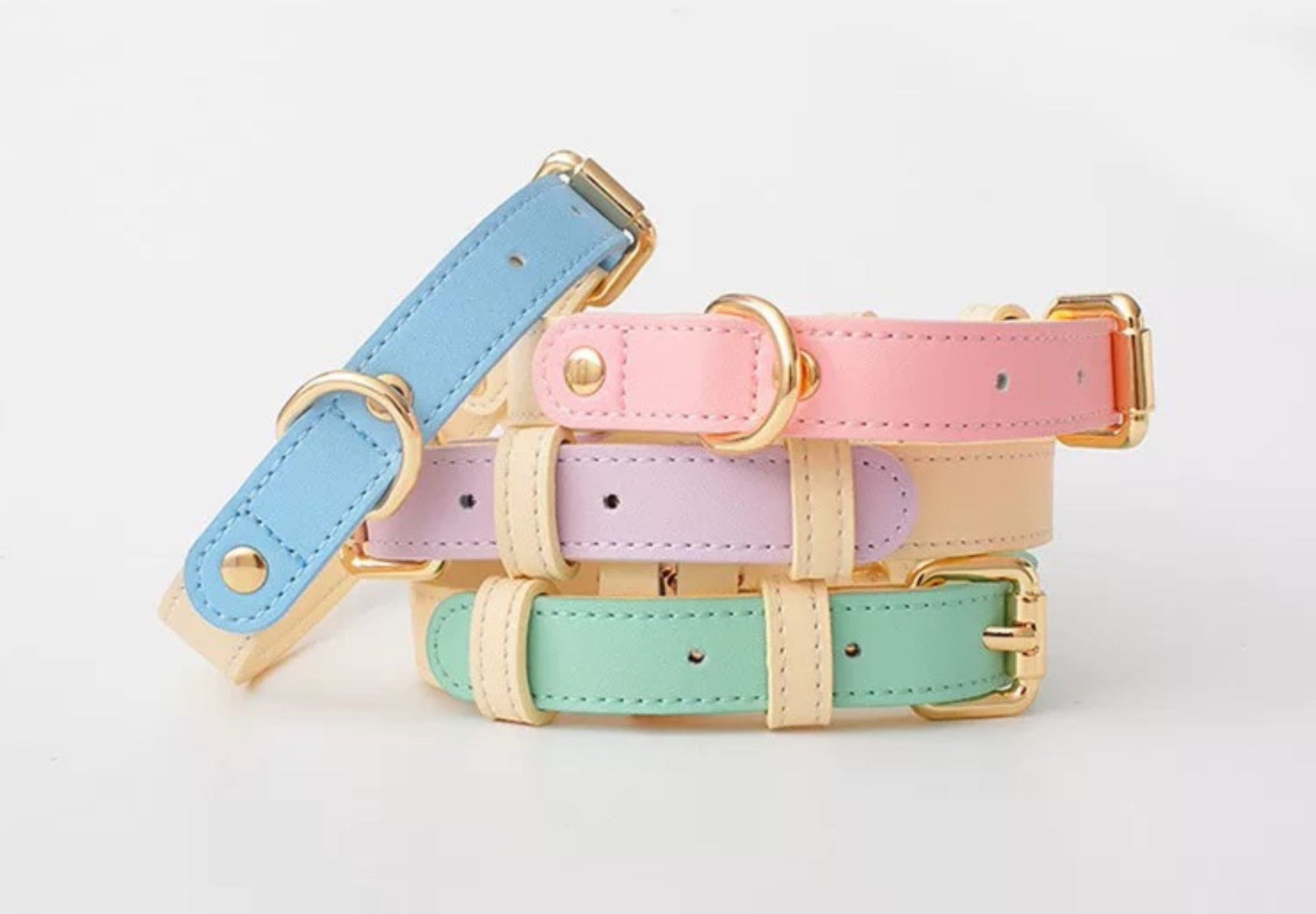A dog collar is not only a stylish accessory but also an important tool for the safety and control of your dog. In this blog article, you will learn everything you need to know about dog collars – from choosing the right model to tips on how to ensure it fits well and doesn't slip.
1. A dog collar that doesn't slip
The right dog collar should fit snugly but not too tight to ensure it doesn't slip. Choose a collar with a non-slip closure, such as a metal D-ring, which provides extra stability. An adjustable collar offers additional security as it can be precisely adjusted to your dog's neck size. This way, it stays in place even with active dogs.
2. When to use a dog collar?
It is important to put a collar on your dog at a young age, ideally as soon as he is old enough to be walked on a leash. This can be around 8 weeks of age. Make sure that the collar is soft and lightweight to avoid putting strain on your puppy's neck. Over time, you can switch to sturdier and more durable collars that are better suited for adult dogs.
3. The best dog collar
The best dog collar depends on your dog's individual needs. For small and medium-sized dogs, a soft, vegan leather collar can be the ideal choice, as it is both durable and comfortable. For larger dogs that exert more pulling force, a wide collar with reinforced seams is suitable, as it evenly distributes pressure while being sturdy.
4. Dog collar – what to consider?
When buying a dog collar, you should pay attention to the following factors:
- Material: Choose a material that is comfortable and does not cause skin irritation. Vegan leather is an eco-friendly and animal-friendly choice.
- Closure: A secure, stable closure like a metal D-ring is ideal to ensure that the collar does not accidentally come undone.
- Fit: The collar should be well adjusted to the circumference of your dog's neck. It should neither be too tight nor too loose.
5. Dog collar – what sizes, how wide, how tight?
The right size of the dog collar is crucial for your dog's comfort and safety. The width of the collar should be proportional to the size of your dog. A wider collar distributes pressure better and is ideal for larger dogs. The rule is: there should be space for two fingers between the collar and your dog's neck. This way, it is neither too tight nor too loose.
Size recommendations:
- Small dogs (e.g. Chihuahua): 1-2 cm wide collars.
- Medium dogs (e.g. Beagle): 2-3 cm wide collars.
- Large dogs (e.g. Labrador): 3-4 cm wide collars.
6. Which dog collar is best for pulling?
For dogs that pull strongly, a wide collar with reinforced seams is the best choice. These collars distribute the pressure evenly and reduce the strain on your dog's neck. Alternatively, a padded collar or a special anti-pull collar that gently corrects pulling can also be helpful.
Conclusion
A good dog collar is more than just a stylish accessory – it is an important part of dog gear that provides comfort, safety, and control. Pay attention to the right fit, the material, and the stability to ensure that your dog stays happy and safe, no matter where you go together.




